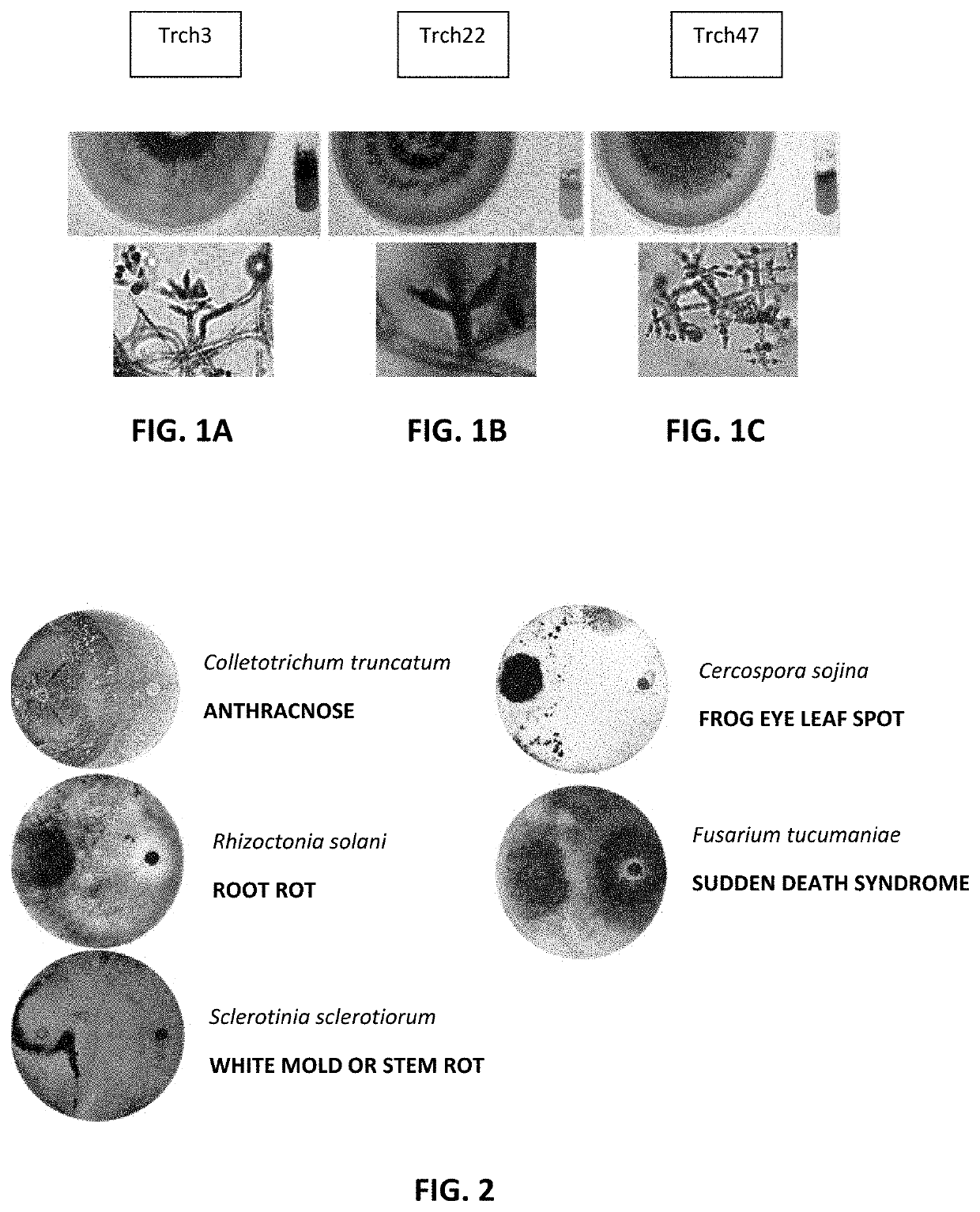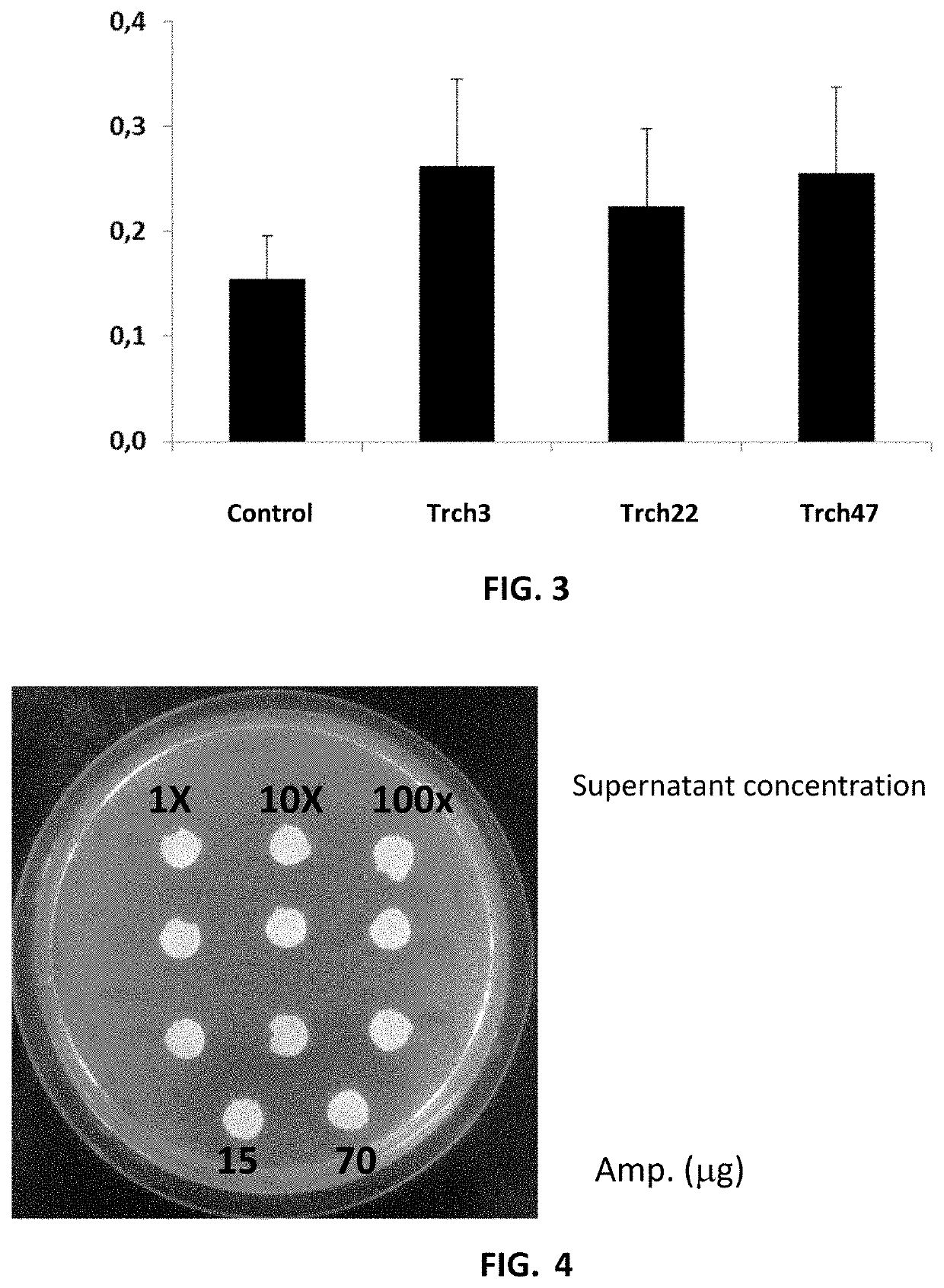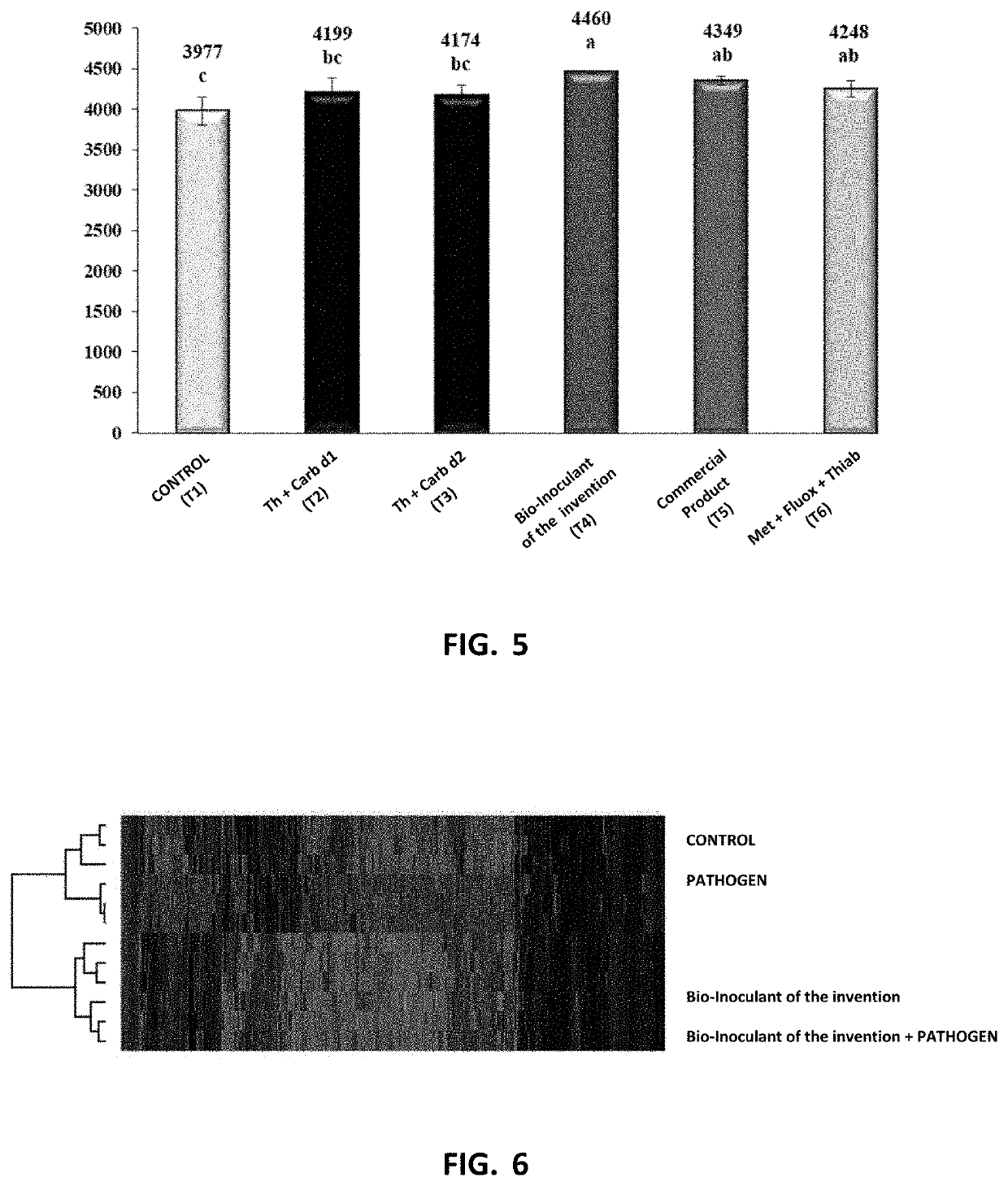Biological inoculant having enhanced fertilizing and fungicidal activity
a technology of biological inoculants and fertilizers, applied in the field of agricultural technology, can solve the problems of increasing aggressiveness on the environment and the farmer, compromising the health of farmers, and reducing the quality of the environment, and achieve the effect of reducing the use of chemical pesticides
- Summary
- Abstract
- Description
- Claims
- Application Information
AI Technical Summary
Benefits of technology
Problems solved by technology
Method used
Image
Examples
example 1
Determination of Antagonist Capacity of Isolated Trichoderma Strains
[0051]As described herein before, a total of 60 Trichoderma isolates were obtained from the roots of crop plants as well as from soil samples. These samples were identified by morphology, colony pigmentation and identification of distinctive structures of the genus by microscopy techniques.
[0052]In order to determine the antagonistic activity of the soil isolates, confrontation assays were performed with a series of phytopathogenic fungi, including those responsible for the most renowned diseases in plant crops: Fusarium sp, Colletotrichum sp., Cercospora sp., Sclerotinia sp., and Rhizoctonia sp.
[0053]These genera of fungal pathogens affect many agronomically relevant crops, such as soybean, wheat, maize, sunflower, cotton, sorghum, alfalfa, flax, canola, chickpea, rice, potato, onion, yerba mate (Ilex paraguariensis), tea and vine.
[0054]During several growth rounds in the presence of the above mentioned fungal path...
example 2
Characterization of Interaction of Isolated Trichoderma Strains with Soybean
[0059]The effects of the three isolated Trichoderma strains on the growth of soybean plants in greenhouse conditions were determined. In order to achieve this, the most effective isolated strains for controlling the proliferation of pathogenic fungi were selected and the concentration of conidia to inoculate plants was optimized (Samuels & Hebbar, 2015). The biological inoculant was established to be still efficient at a concentration as low as 106 spores / ml.
[0060]Later assays demonstrated that the selected three Trichoderma harzianum strains colonize the roots of soybean plants in the presence of B. japonicum without reducing their natural nodulation capacity. Moreover, treatment of soybean seeds with these T. harzianum strains even resulted in an increase in the number of nodules per root weight, with Trch3 displaying the greater effect, and also maintaining the ratio of functional nodules per plant. Table...
example 3
Trichoderma-Bradyrhizobium Interaction Assay
[0062]Crops were established and grown in order to evaluate the growth capacity of both microorganisms: Bradyrhizobiun japonicum and Trichoderma.
[0063]Soybean plant nodulation capacity was also evaluated in the presence of Trichoderma, in comparison to control plants. These tests were conducted under controlled field crop conditions and allowed the assessment of the impact of fungal protection treatment on seeds, nodulation capacity, different growth parameters and final production of soybean.
[0064]Treatments were applied in first quality soybean. The experiment was implemented in the city of Pergamino, located to the north of the Buenos Aires province (33°57′51.87″S 60°34′36.89″W), on a Pergamino Series soil, typical Argiudol, mixed family, franca soil texture, thermal, Class 1-2, IP=85. The sowing was carried out with soybean variety DM 4615 STS, in rows spaced at 0.40 m. The experimental site registers a continuous agricultural rotatio...
PUM
 Login to View More
Login to View More Abstract
Description
Claims
Application Information
 Login to View More
Login to View More - R&D
- Intellectual Property
- Life Sciences
- Materials
- Tech Scout
- Unparalleled Data Quality
- Higher Quality Content
- 60% Fewer Hallucinations
Browse by: Latest US Patents, China's latest patents, Technical Efficacy Thesaurus, Application Domain, Technology Topic, Popular Technical Reports.
© 2025 PatSnap. All rights reserved.Legal|Privacy policy|Modern Slavery Act Transparency Statement|Sitemap|About US| Contact US: help@patsnap.com



